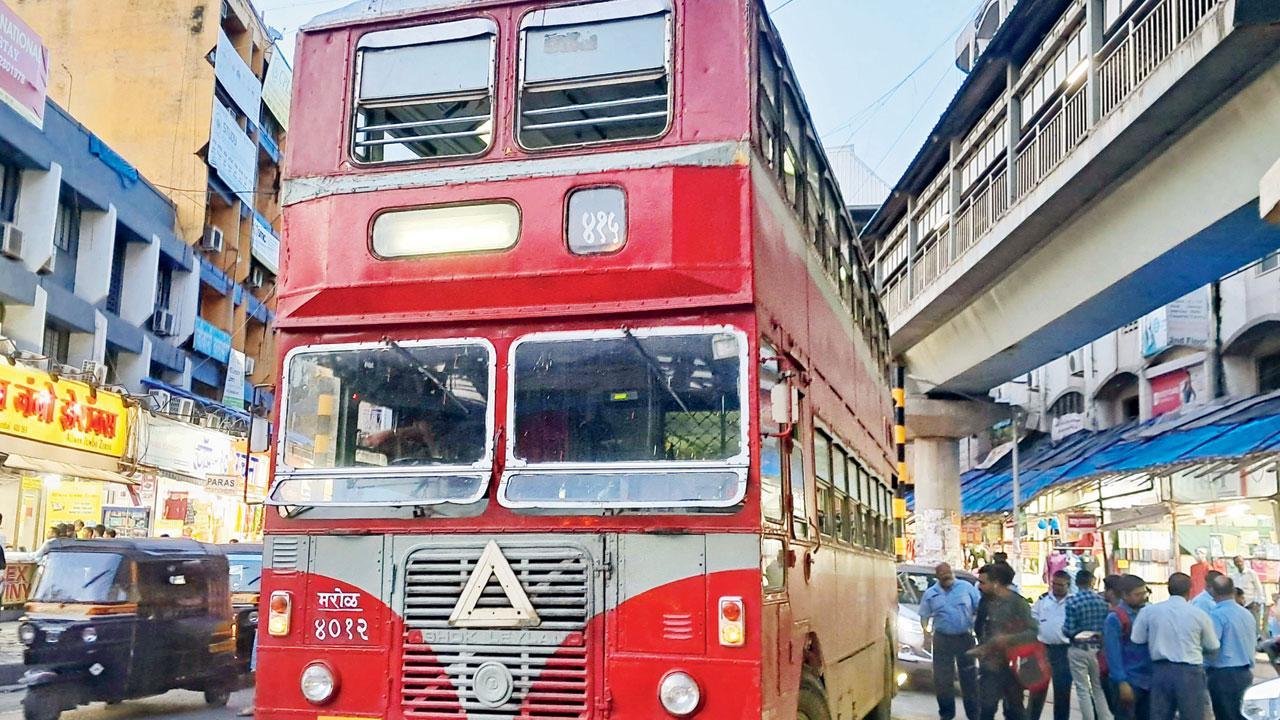Mumbai: Fans manage to snatch one iconic double-decker from scrap heap

One of Mumbai’s iconic non-AC double-deckers will be saved for posterity at the Anik bus depot. Thanks to the preservation efforts of the city’s bus fans, and the intervention of the chief minister’s office, the BEST has promised to spare one such bus from the scrap dealer. Several appeals had been made to the BEST administration and politicians to save vintage buses for future generations. mid-day had highlighted how a businessman from Dahisar is willing to purchase one double-decker for his collection, come what may.
“The trams are gone, trailer double-deckers are gone and now 20-plus non-AC double-decker buses are remaining, but they will all be scrapped in a month. The iconic buses will now be replaced by the AC double-decker fleet,” said Shubham Bharat Padave, an IT professional, who had appealed to the BEST administration and the state’s political leaders to save the bus.
Shubham Bharat Padave
“In response to my earnest request, I received an email from the chief minister’s office that the request was forwarded to the urban development department to which the BEST responded, stating that the administration is considering preserving a double-decker bus lined up for scrap at the Anik transport museum,” Padave said. Besides this, Kalyan MP and the chief minister’s son Dr Shrikant Shinde has also promised to take up the matter, he said. Rupak Dhakate, a bus enthusiast from Malwani, kick-started the initiative to ensure one kind of BEST bus is preserved in the undertaking’s museum, in 2020.
“Earlier, I had written to BEST’s general manager about the preservation of at least one type of bus for future generations but didn’t receive a positive response. However, this time, Shubham went one step ahead and wrote to the CM and received a positive response. It’s a small win yet and I hope it turns into reality. The double-decker is not just a bus, it’s an emotion. The feeling of sitting in top-deck front seats is slowly getting lost because the next-generation buses are going to be AC ones only,” said Dhakate, an HR professional, said.
Another bus fan, Gandharva Purohit, said, “Just like transport museums in the United Kingdom, the BEST can organise open-day events where souvenirs can be sold and this will attract more people to the BEST museum, generating revenue for the undertaking.” Padave said, “The entire fleet of non-AC double-deckers were customised by BEST engineers and all variants were identical for generations. Front-face arc, dropping windows, direction arrow, partially-opening front windshield, scrolling destination blinds and cushion seats are some of the features that are disappearing in modern transport. In order to pass on the legacy of BEST undertaking to the next generations we must at least preserve one bus from the fleet,” Padave said.
The old double-decker bus
The look of double-deckers is based on the old London Routemaster bus design. Introduced in Bombay in 1937 to cope with the growing number of passengers, the sheer size and look of the vehicle ensured they were a success from day one. The Routemaster design developed in England between 1947 and 1956 has been synonymous with an independent driver’s cabin, integral body design and a rear-entry platform.
20
Minimum number of surviving vintage double-deckers

Atul Tiwari is a seasoned journalist at Mumbai Times, specializing in city news, culture, and human-interest stories. With a knack for uncovering compelling narratives, Atul brings Mumbai’s vibrant spirit to life through his writing.





